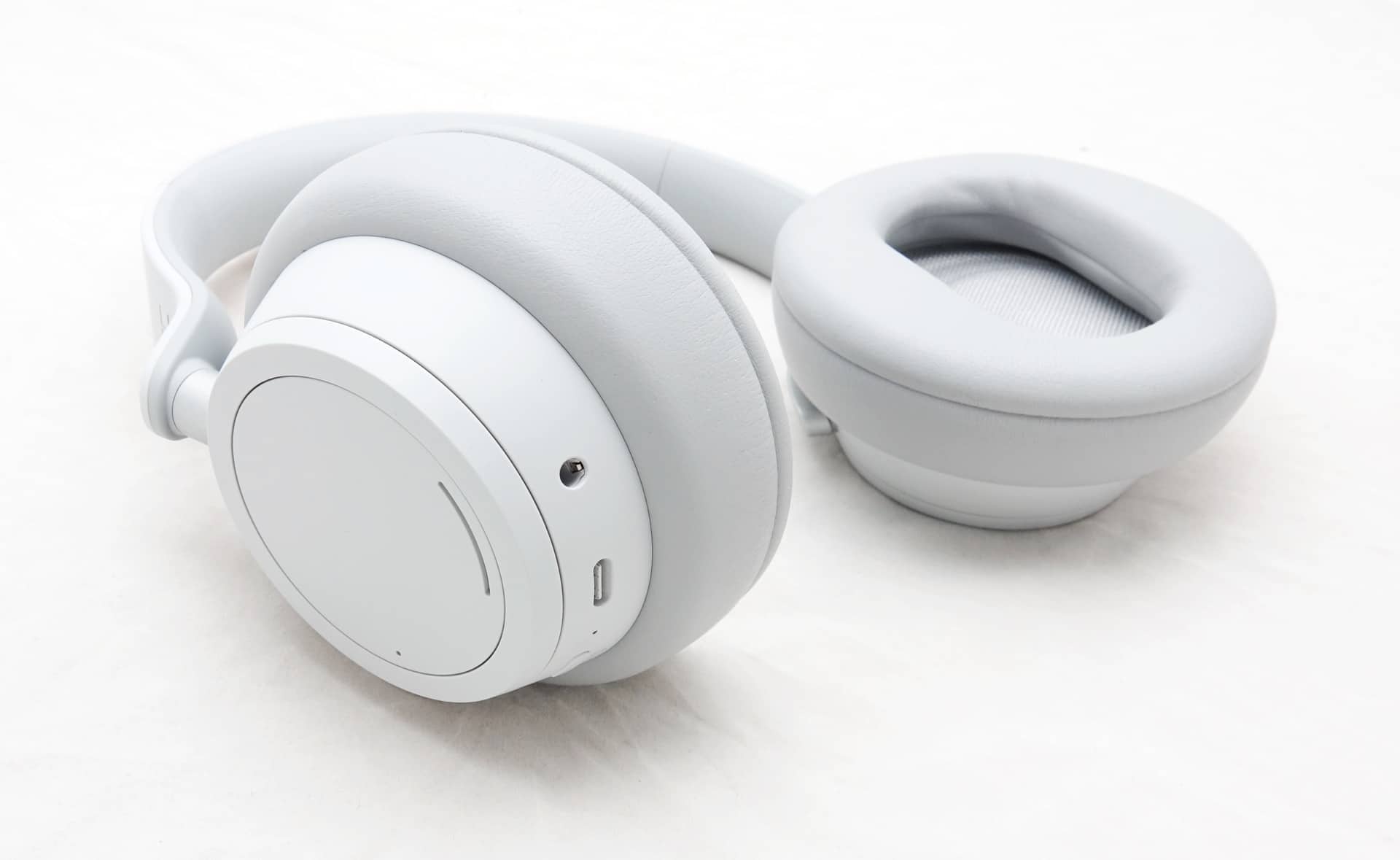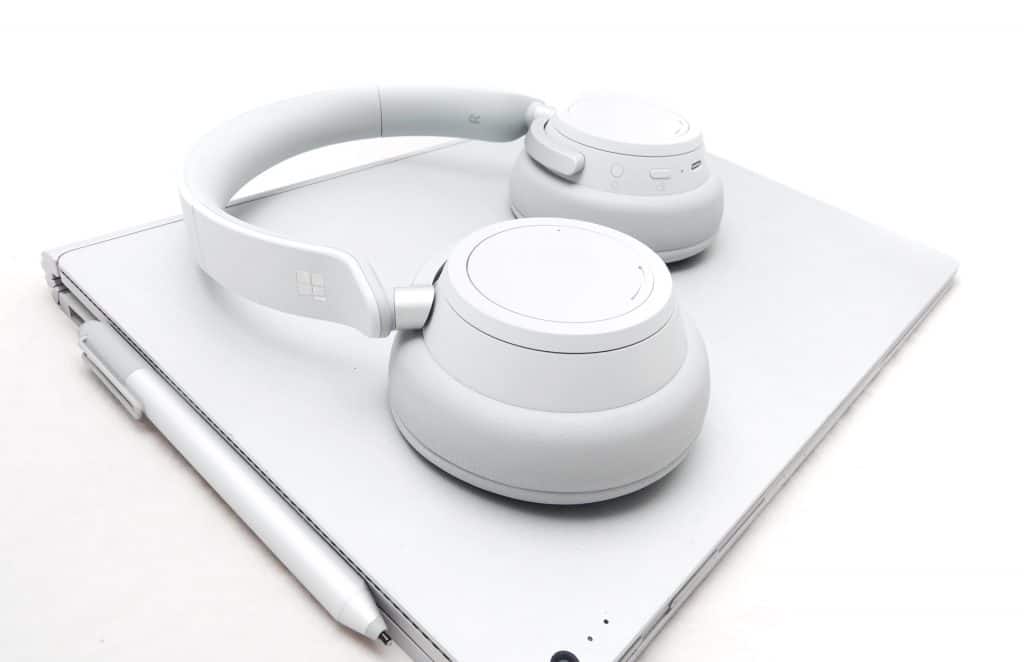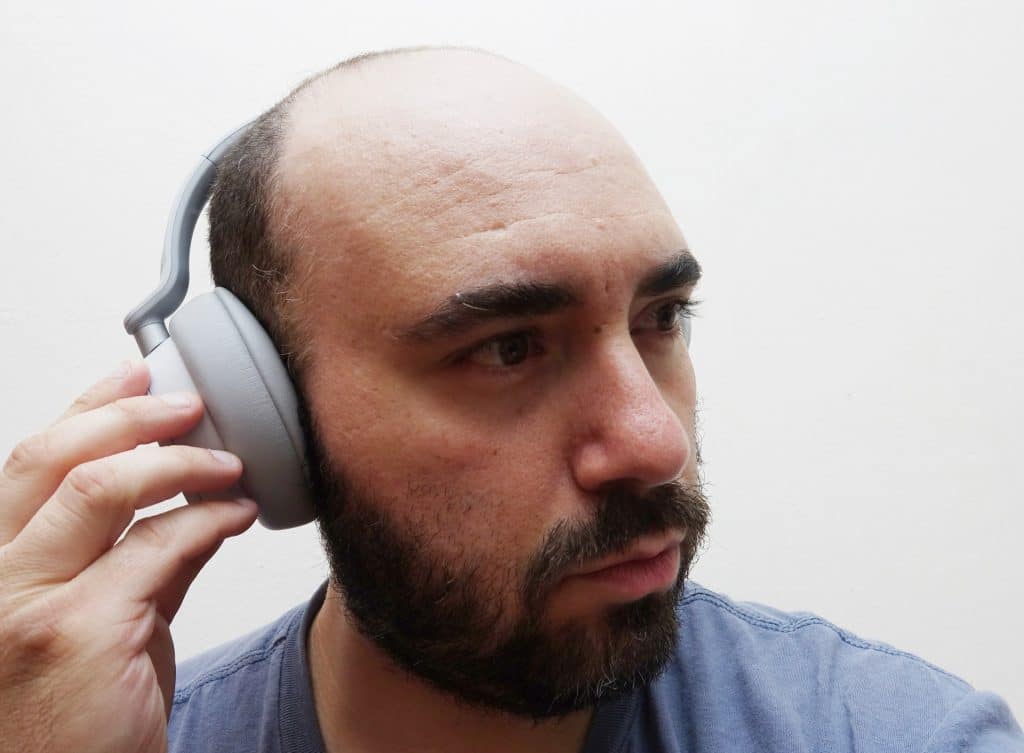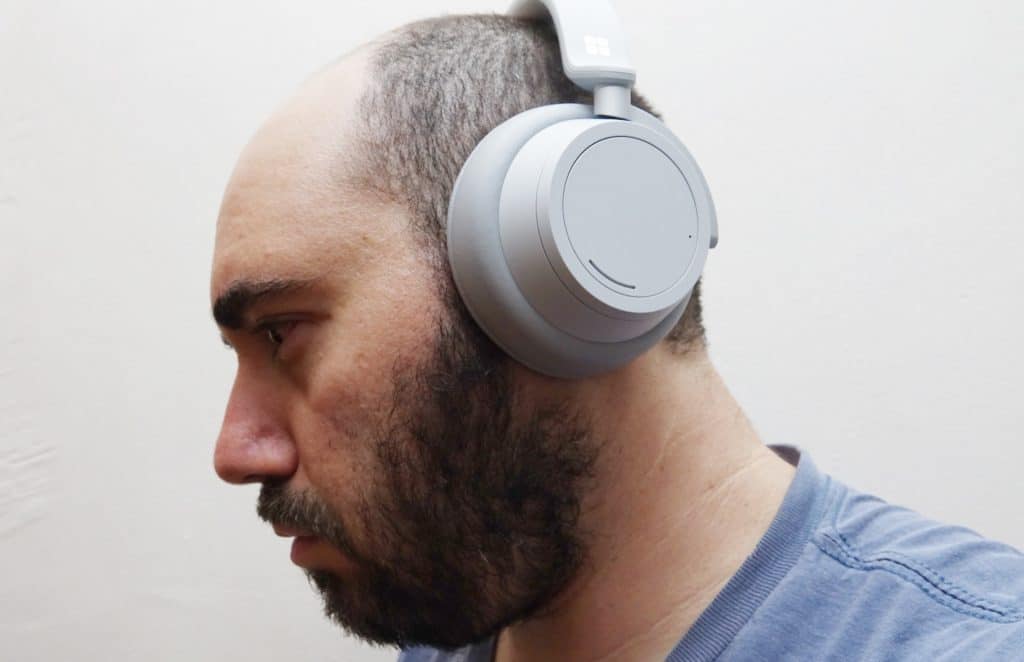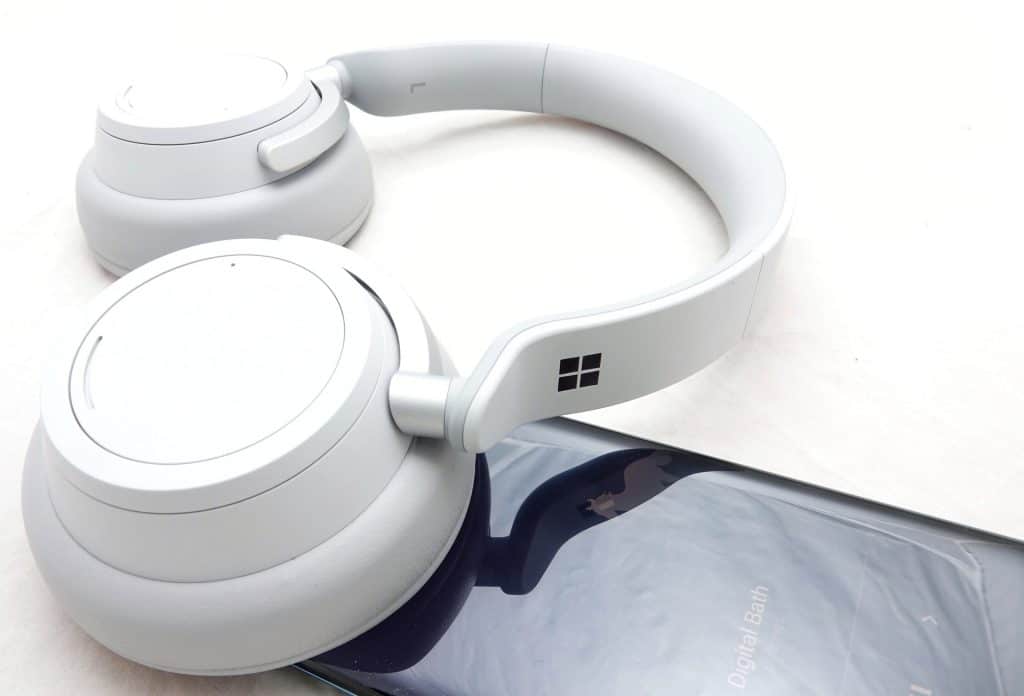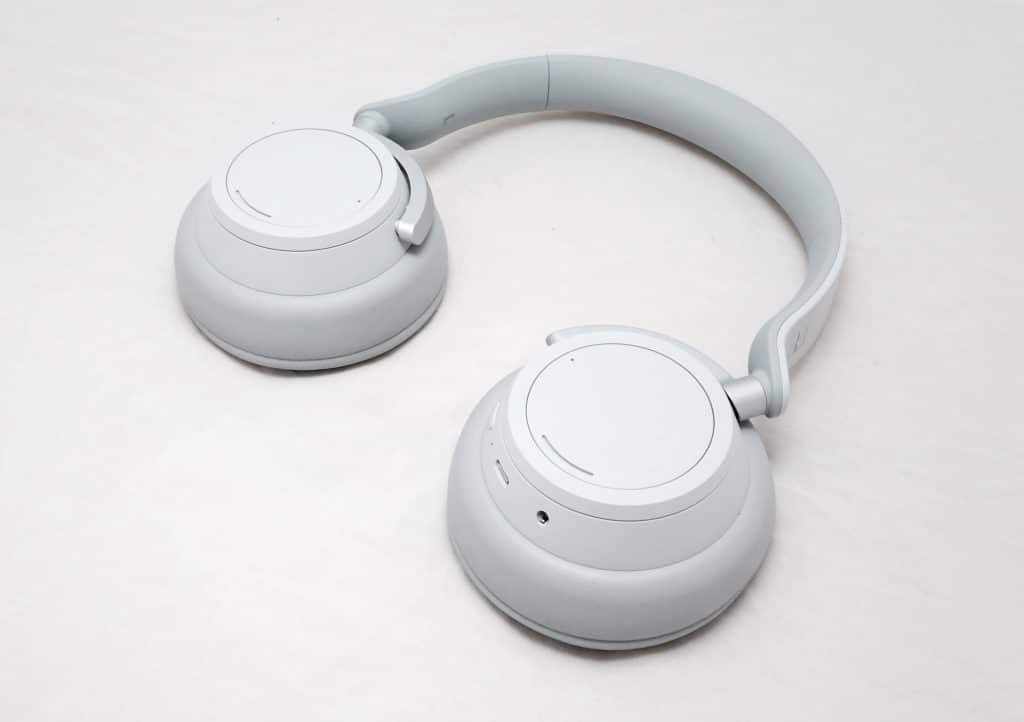Quick review
The good
The not-so-good
Microsoft’s hardware division has a long and fruitful history, but outside of the Zune, audio hasn’t been a forte. And yet with the Surface Headphones, it’s giving it a solid go.
Windows, Office, Outlook, Age of Empires, and more. You know Microsoft for its software, and there’s a gold chance that with the Xbox, you know some of its hardware as well. What you may not be aware of is just how long Microsoft has been building hardware for.
Back in the 90s, the maker of Windows was experimenting with web cameras, keyboards, and even game controllers (SideWinder, for folks old enough to remember). And even before it in the 80s, there was at least one mouse.
Microsoft Hardware has actually been dabbling in technology beyond Windows for the longest time, and when you look at gadgets like the Hololens and Surface, you see just how much the company can get right.
But audio hasn’t really been a strong point for Microsoft, and outside of a pair of speakers in the late 90s, its only major attempt at audio technology was the Zune, an iPod competitor that didn’t really take off. We don’t talk about that anymore.
The Surface lineup, however, has given Microsoft renewed energy in recent years, and with it’s now ready with a return to audio technology in the Surface Headphones, a pair of noise cancelling cans that match the computer of the same name. Are these as good as the Surface lineup in the first place, or could you do better?
Design and features
A little different from your standard pair of headphones, Microsoft’s first pair of cans is one part noise cancelling pair made for music, and another for its assistant, the less talked about Cortana.
While most of us will probably use the headphones for music listening, there’s technology to handle both sides.
The headphones arrive in a soft grey colour scheme, which emulates the look and feel of Microsoft’s now-established Surface computers. In fact, if you have any Surface that isn’t the black model, when you rest the headphones on the back against the kickstand or on top of a Surface Book, the whole thing looks schmick and colour-coordinated.
But while the Surface tablets and laptops are made from magnesium, you’ll find the Surface Headphones rely more on plastic, which no doubt helps keep the price down.
Inside, however, there’s a 40mm driver and some technology to control noise cancellation, with the Microsoft Surface Headphones working over Bluetooth, though a 3.5mm cable is included in the hard fabric carrying case if you need to go old school.
There’s also a USB Type C port for charging, and a few controls, as well, including a power button, mute button, volume controls, and noise cancellation controls to let you dial in the amount of noise cancellation you would like.
In-use
Built as a combination voice assistant and music-capable set of headphones — like pretty much every pair of noise cancelling headphones available — the Microsoft Surface Headphones have two main uses.
Most people will probably end up using them to play music, and with that, you only have a couple of control issues. You’ll find a control wheel much like a dial around the frame of each ear, with the left ear dial working for noise cancelling levels while the right ear handles volume. There are also buttons for power and microphone muting on the right ear pad.
Easy enough, for sure, though the app Microsoft makes for the Surface Headphones is Windows-only. That means if you want to change the settings, you need a computer, because the app doesn’t exist on iOS or Android, even if that’s the phone you use.
There’s also Cortana support for voice assistant technology — more on that later — and it requires an app if you want to use it.
Performance
Truth be told, we didn’t rely on the voice assistant functionality as much as Microsoft probably wouldn’t have liked.
But we did pay attention to the audio performance, because that’s an area we really care about. Voice assistants may well be handy for many, but we suspect the main reason why someone will buy a pair of wireless headphones won’t be to listen to the dulcet tones of their digital assistant, but rather the rush of the music they love so dearly.
And that’s where we spent most of our time with the Microsoft Surface Headphones, donning the grey pair that matched our old Surface Book so well, but less so with the iPad Pro we were carrying around (they’re both one of the fifty shades of grey-ish), and the blue Huawei P30 Pro we’ve been rocking for the better part of a month.
We connected the Surface Headphones to each, because multipoint does appear to be supported, and jumped between high-res audio testing and streamed music using the Pickr Sound Test, which you can always listen to for yourself.
And what an experience that was, with Microsoft’s first pair of headphones delivering something a little bit different from what we’ve come to expect from wireless and noise cancelling headphones.
On the one hand, there’s a great soundscape here, with plenty of audio quality to be had, delivering solid bass amidst great mids and totally decent highs, though the mids are definitely where the Surface Headphones are at.
“Balance” is the usual goal for headphones, and that means relatively focused lows, mids, and highs, with the sound recreated with little bias to either area.
Warm sound is a little different, and tends to provide a touch of bias and boost to the lows and mids, giving the whole sound a level of warmth that is more akin to listening on vinyl or speakers.
And that’s the quality the Microsoft Surface Headphones kind of glaze your sound in.
The punchy but soulful tracks from Ariana Grande, Mark Ronson, Marvin Gaye, and Charlie Puth demonstrated this well, pushing the warmth a little harder than we’re used to in balanced headphones, though it was surprisingly easy to get used to In rock and jazz, with the likes of David Bowie and The Beatles, as well as Ray Brown and Miles Davis coming across like their vinyl equivalents.
It’s a surprising experience, to say the least, not normally because headphones don’t normally venture this far into warmth and deliver.
Battery
Battery life for the Surface Headphones definitely ventures in the “acceptable” territory, hitting 15 hours as a maximum, and performing about that well in our tests.
While that’s not the best you can find out there — 24 hours is the rough standard at the moment — it’s certainly acceptable, and thanks to the USB Type C port at the bottom, it’s not as though you need to look far to charge them up.
If you have a recent laptop or smartphone, there’s a good chance you have a Type C connection, and if not, the headphones come with one to let you plug the Surface Headphones directly into the standard ubiquitous USB Type A charge port and give it the power it craves.
Value
However the price could do with a little work, even if it’s not far from where the RRP of other noise cancelling headphones.
That means Microsoft rings the retail price at $499.95 which is about standard for the area, even though you can find competitors at a lower price.
But the price is hardly a problem in the grand scheme of things, and the Microsoft Surface Headphones have other issues.
What needs work?
While we’re more than a little hung up on Microsoft’s insistence to only make its app work on Windows — a strange concept given you’re probably going to use the Surface Headphones on a phone, and Windows Phone is dead in the water — we’re even more hung up on the aspects of the headphones that can come across as unfinished.
Take the voice for the whole system, which says things in Cortana’s voice some of the time, but then goes back to a weird staccato and mechanical voice when the headphones have to say a name or word it doesn’t know.
It’s a little strange, and almost like someone at Microsoft said “this’ll do”, hoping no one would take notice, and it’s just one of the things like it.
But even the noise cancellation can feel half-finished.
Even though you get the very cool control wheel on the left headphone that lets you dial in the amount of noise cancellation available, it doesn’t feel as strong an integration as say the ambient noise cancellation modes Sony and Jabra have each been using, whereby the cancellation stays on but opens up the mics so you hear muffled outside noises.
Microsoft’s approach is more about turning on the microphones and letting you hear an amplified world outside, which can come across a little odd while simultaneously almost deafening you in the process. It’s a shame that tactile noise control dial wasn’t a little more intelligent and worked in a way whereby you wanted to listen to elements of the outside world. Rather, it’s more like a volume dial for the noise cancelling mics: turn them down and noise cancelling is turned ask the way up, but turn them up and noise cancellation just boosts the outside world.
There’s also the matter of the voice assistant, which can be triggered by holding down either headphone surface and letting the assistant sound ring true. The voice assistant triggers on the headphones do appear to work with others, and we had our pair fire up Google’s Assistant at random times. Almost too random, actually, making them harder to use, though there’s a Cortana app if you’re desperate for that.
And that leads us to another problem, and one that kind of deserves its own subheading.
What needs work? Cortana.
Microsoft’s virtual assistant has never left a lasting impression on us, except to say that it’s part of Windows and occasionally speaks up. We’ve never found it as reliable as either Google or Siri, but with the Microsoft Surface Headphones, it kind of hits a new level. A lower new level, but new all the same.
To make Cortana work on the Surface Headphones with your phone, you need to install the Cortana app. That should come as no surprise given Windows Phone doesn’t exist anymore, and an app is the only way you could get Cortana running on an iPhone or an Android handset.
So you install the app and get Microsoft’s virtual assistant, and it can sit on the phone easily enough, no worries there.
Unfortunately, the Surface Headphones won’t always fire the Cortana connection up when they’re told to, and even when they do, Cortana doesn’t always seem to care about what you’ve told it.
We lost count of how many times we triggered Cortana and asked it a question, only to find it ignored us and kept on playing music. The times it did work, Cortana was slow, missed our words, and only actually did anything when a phone was activated out of standby. That means we needed to have our phone unlocked in order to use Cortana, a bit of a waste given voice assistant are supposed to be usable when your phone isn’t necessarily in reach.
But here with Cortana, that wouldn’t work. It’s fine with Google, and totally fine with Siri, and yet not Cortana. Crazy.
Final thoughts (TLDR)
The funny thing about the Microsoft Surface Headphones is that if you can look past the woeful voice assistant integration, the headphones offer a surprisingly warm sound the likes of which you don’t normally hear outside of a speaker.
If you like your music to sound like it has come from a nice speaker system, that’s what the Microsoft Surface Headphones deliver, even if they come with a catch or two.
UPDATE: Microsoft Australia has advised that Cortana is not presently available in Australia, and thus it should not work locally. As such, the Microsoft Surface Headphones will only presently work for Australians as wireless headphones, not with assistant functionality. Given what we experienced, we’re leaving our review the same, as the lack of strength in the assistant was just one of the negatives, but will look to update if/when Microsoft makes Cortana work locally. Hopefully that’s soon, especially as it works on computers.


